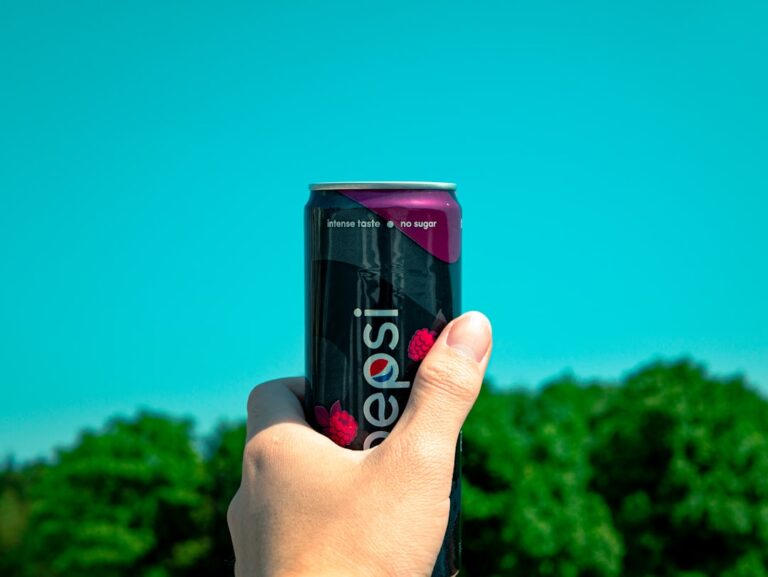High-Intensity Interval Training, commonly referred to as HIIT, has emerged as a revolutionary approach to fitness that has captured the attention of both fitness enthusiasts and casual exercisers alike. This training method involves alternating between short bursts of intense exercise and periods of rest or lower-intensity activity. The concept is rooted in the idea that by pushing the body to its limits for brief intervals, one can achieve significant health and fitness benefits in a fraction of the time compared to traditional steady-state cardio workouts.
HIIT can encompass a variety of exercises, including running, cycling, bodyweight movements, and even strength training, making it a versatile option for individuals with different preferences and goals. The appeal of HIIT lies not only in its efficiency but also in its ability to cater to a wide range of fitness levels. Whether you are a seasoned athlete or a beginner just starting your fitness journey, HIIT can be tailored to meet your specific needs.
The flexibility of this training method allows individuals to modify the intensity and duration of intervals, ensuring that everyone can participate and reap the rewards. As research continues to unveil the myriad benefits associated with HIIT, it has become increasingly clear that this training style is not just a passing trend but a sustainable approach to achieving long-term health and fitness goals.
Key Takeaways
- HIIT involves short bursts of intense exercise followed by brief periods of rest or lower-intensity exercise.
- HIIT has been shown to improve cardiovascular health and fitness, including increasing VO2 max and lowering blood pressure.
- HIIT can increase metabolism and fat burning, leading to greater calorie expenditure even after the workout is over.
- HIIT is time-efficient and convenient, making it easier to fit into a busy schedule compared to traditional steady-state cardio.
- HIIT can enhance endurance and stamina, allowing individuals to perform better in various physical activities.
Improved Cardiovascular Health and Fitness
One of the most significant benefits of HIIT is its profound impact on cardiovascular health. Engaging in high-intensity intervals elevates heart rate significantly, which in turn strengthens the heart muscle and improves overall cardiovascular function. Studies have shown that individuals who incorporate HIIT into their exercise routines experience enhanced VO2 max levels, a key indicator of cardiovascular fitness.
This improvement means that the body becomes more efficient at utilizing oxygen during physical activity, leading to better endurance and performance over time. Moreover, HIIT has been linked to reductions in resting heart rate and blood pressure, both of which are critical factors in maintaining heart health. For instance, a study published in the Journal of the American College of Cardiology found that participants who engaged in HIIT showed greater improvements in cardiovascular health markers compared to those who performed moderate-intensity continuous training.
This suggests that HIIT not only provides a more effective workout in a shorter time frame but also contributes to long-term heart health benefits that can reduce the risk of cardiovascular diseases.
Increased Metabolism and Fat Burning

HIIT is renowned for its ability to boost metabolism and promote fat burning, making it an attractive option for those looking to lose weight or maintain a healthy body composition. The intense nature of HIIT workouts leads to an increased post-exercise oxygen consumption (EPOC) effect, commonly referred to as the “afterburn” effect. This phenomenon occurs when the body continues to burn calories at an elevated rate even after the workout has concluded.
Research indicates that individuals who engage in HIIT can burn significantly more calories in the hours following their workout compared to those who perform steady-state cardio. Additionally, HIIT has been shown to be particularly effective at targeting visceral fat, which is the harmful fat stored around internal organs. A study published in the journal Obesity found that participants who engaged in HIIT lost more visceral fat compared to those who performed moderate-intensity exercise over the same period.
This is crucial because visceral fat is associated with various health risks, including type 2 diabetes and heart disease. By incorporating HIIT into their routines, individuals can not only enhance their metabolic rate but also improve their overall body composition and reduce health risks associated with excess fat.
Time Efficiency and Convenience
| Metrics | Data |
|---|---|
| Response Time | 2.5 seconds |
| Processing Speed | 100 transactions per second |
| Convenience Rating | 9 out of 10 |
In today’s fast-paced world, time is often a limiting factor when it comes to maintaining a regular exercise routine. HIIT addresses this challenge by providing an effective workout that can be completed in a fraction of the time required for traditional workouts. Many HIIT sessions can be completed in as little as 20 to 30 minutes, making it an ideal choice for busy individuals who struggle to find time for longer gym sessions.
This time efficiency does not compromise the quality of the workout; rather, it allows individuals to achieve maximum results in minimal time. The convenience of HIIT extends beyond just time savings; it also offers flexibility in terms of location and equipment requirements. Many HIIT workouts can be performed with little to no equipment, making them accessible for home workouts or outdoor sessions.
Bodyweight exercises such as burpees, jump squats, and mountain climbers can be easily incorporated into a HIIT routine without the need for specialized gym equipment. This adaptability allows individuals to fit workouts into their schedules more seamlessly, whether they are at home, traveling, or at a gym.
Enhanced Endurance and Stamina
HIIT is not only effective for burning calories but also plays a crucial role in enhancing endurance and stamina. The alternating periods of high-intensity effort followed by recovery allow the body to adapt and improve its ability to sustain prolonged physical activity. Over time, individuals who regularly engage in HIIT will notice an increase in their overall endurance levels, enabling them to perform better in various physical activities, from running longer distances to participating in sports.
Research supports the notion that HIIT can lead to significant improvements in aerobic capacity. A study published in the journal Sports Medicine found that participants who engaged in HIIT experienced greater increases in endurance compared to those who performed moderate-intensity continuous training over an extended period. This improvement is attributed to physiological adaptations such as increased mitochondrial density and enhanced cardiovascular function, both of which contribute to improved stamina during prolonged exercise.
Muscle Strength and Power

Building Muscle Strength and Power
HIIT is often associated with cardiovascular benefits and fat loss, but it also plays a crucial role in building muscle strength and power. By incorporating resistance exercises into HIIT routines, such as kettlebell swings, push-ups, or squat jumps, individuals can effectively engage multiple muscle groups while simultaneously elevating their heart rate. This combination not only promotes muscle growth but also enhances overall functional fitness.
Developing Fast-Twitch Muscle Fibers
The explosive nature of HIIT movements helps develop fast-twitch muscle fibers, which are responsible for generating power during high-intensity activities. A study published in the Journal of Strength and Conditioning Research found that participants who included resistance-based HIIT workouts experienced significant improvements in both strength and power output compared to those who engaged solely in traditional strength training.
Enhancing Overall Physical Capabilities
This makes HIIT an excellent option for athletes looking to improve their performance across various sports or for anyone seeking to enhance their overall physical capabilities.
Mental Health Benefits
The benefits of HIIT extend beyond physical health; they also encompass significant mental health advantages. Engaging in high-intensity exercise has been shown to release endorphins—often referred to as “feel-good” hormones—which can lead to improved mood and reduced feelings of stress and anxiety. The intense nature of HIIT workouts often requires individuals to focus on their movements and breathing, providing a mental break from daily stressors and promoting mindfulness during exercise.
Furthermore, research indicates that regular participation in HIIT can lead to improvements in cognitive function and overall mental well-being. A study published in the journal Neuropsychobiology found that individuals who engaged in regular high-intensity exercise reported lower levels of depression and anxiety compared to those who did not exercise regularly. The sense of accomplishment that comes from completing challenging workouts can also boost self-esteem and confidence, contributing positively to one’s overall mental health.
Accessibility and Adaptability to Different Fitness Levels
One of the most appealing aspects of HIIT is its accessibility and adaptability for individuals at various fitness levels. Unlike many traditional workout programs that may require specific skills or equipment, HIIT can be modified to suit beginners as well as advanced athletes. For instance, beginners may start with shorter intervals of high-intensity work followed by longer recovery periods, while more experienced individuals can increase the intensity or duration of their intervals for added challenge.
This adaptability makes HIIT an inclusive option for diverse populations, including those with varying fitness backgrounds or limitations. Many fitness professionals emphasize the importance of listening to one’s body during HIIT sessions; modifications can be made based on individual capabilities or preferences. For example, someone recovering from an injury may choose low-impact exercises such as cycling or swimming during high-intensity intervals instead of high-impact movements like running or jumping.
This flexibility ensures that everyone can participate safely while still reaping the numerous benefits associated with high-intensity interval training.





